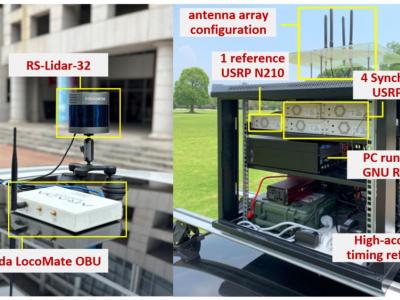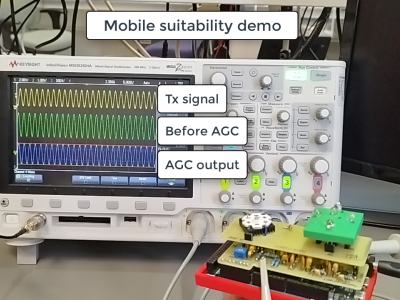Wireless Networking
This study investigates the application of advanced machine learning models, specifically Long Short-Term Memory (LSTM) networks and Gradient Booster models, for accurate energy consumption estimation within a Kubernetes cluster environment. It aims to enhance sustainable computing practices by providing precise predictions of energy usage across various computing nodes. Through meticulous analysis of model performance on both master and worker nodes, the research reveals the strengths and potential applications of these models in promoting energy efficiency.
- Categories:
 513 Views
513 ViewsThis dataset presents real measurements of radio frequency signals in a railway corridor within the Atlantic Forest in the state of São Paulo, Brazil. A transmitter antenna fixed on a pole inside the corridor was used together with an RF generator transmitting a CW signal in the 460 MHz band. A mobile receiving antenna was installed on the roof of a locomotive and connected to a spectrum analyzer, a laptop and software for data reading were used together, coupled to a GPS antenna. Thus, the measured signal was geographically recorded as the train traveled along the corridor.
- Categories:
 158 Views
158 Views
The integration of uncrewed aerial vehicles (UAVs)
with fifth-generation (5G) cellular networks has been a prominent
research focus in recent years and continues to attract significant
interest in the context of sixth-generation (6G) wireless networks.
UAVs can serve as aerial wireless platforms to provide on-demand
coverage, mobile edge computing, and enhanced sensing and
communication services. However, UAV-assisted networks present
new opportunities and challenges due to the inherent size, weight,
- Categories:
 184 Views
184 Views
The dataset consists of a 203.24 MHz signal strength variation in dBuV/m taken at different distances (d) across the hilly terrain region of the study area. In the measurement location is indicated along with the elevation profile.The transmitter is at an elevation of 1369 m above sea level while the receiver antenna stands at 1.8 m above ground, where its elevation is defined by the elevation profile as provided in the dataset. The transmit power is 10 KW which is centered at 204.25 MHz.
- Categories:
 60 Views
60 Views
This design presents a novel tightly coupled dipole array (TCDA) with a bandwidth of 26.2:1 (VSWR < 3) in the 0.20-5.23 GHz band. By adding a new dual-stopband resistive frequency selective surface (RFSS) between the TCA and the floor, the short-circuit points formed by the floor at the frequency points corresponding to λ = 2h and h are both eliminated (h is the height from the antenna to the floor).
- Categories:
 86 Views
86 Views
The utilization of Wi-Fi-based technology for pervasive
indoor user identification has gained prominence due to its cost-
effective nature and compatibility with user devices. For identifying
unique users, previous works proposed capturing the media access
control (MAC) address of the signal emitted from a user’s device,
while information elements(IE)-based MAC de-randomization meth-
ods were presented to mitigate the impairment caused by random
MAC. However, the IE types of different Wi-Fi devices are not
- Categories:
 176 Views
176 Views
This 5G dataset that can be used to advance research in attack detection in 5G service based architecture was generated using the open-source Free5GC testbed and UERANSIM, a UE/RAN simulator. The dataset include benign traffic featuring 5G procedures (e.g., registration, deregistration, PDU session establishment/release, uplink, downlink) along with 6 different HTTP/2 attack simulated between different 5G network functions. including:
- Categories:
 781 Views
781 ViewsThis dataset is supplementary materials for "Study and Implementation of VLC with Angular Diversity Receiver for IoT Systems".
1. ADR Demonstraion.mp4
This describes the prototype of the ADR for IoT systems. It starts from the introduction of the prototype to the demonstration.
Real-time sensor data transmission is demonstrated. The monitor shows the light sensor value at the access point and the user node.
2. Mobile suitability Demonstration.mp4
- Categories:
 619 Views
619 Views



